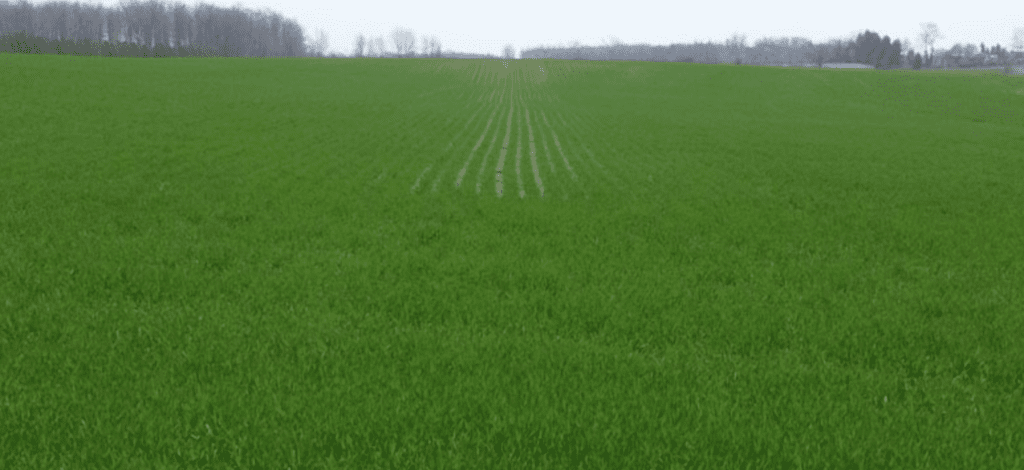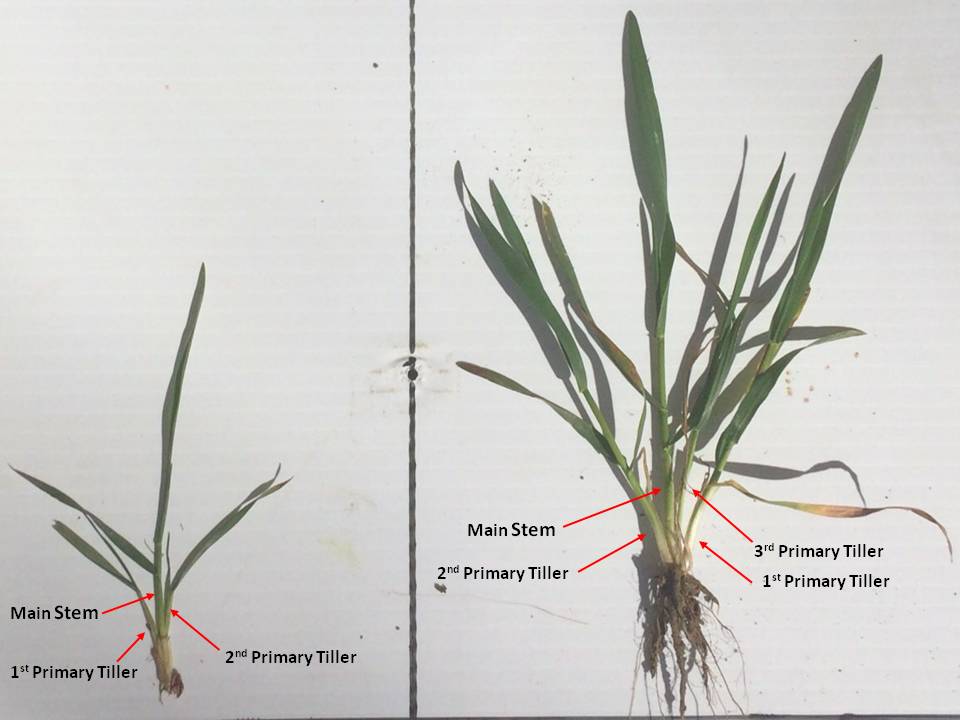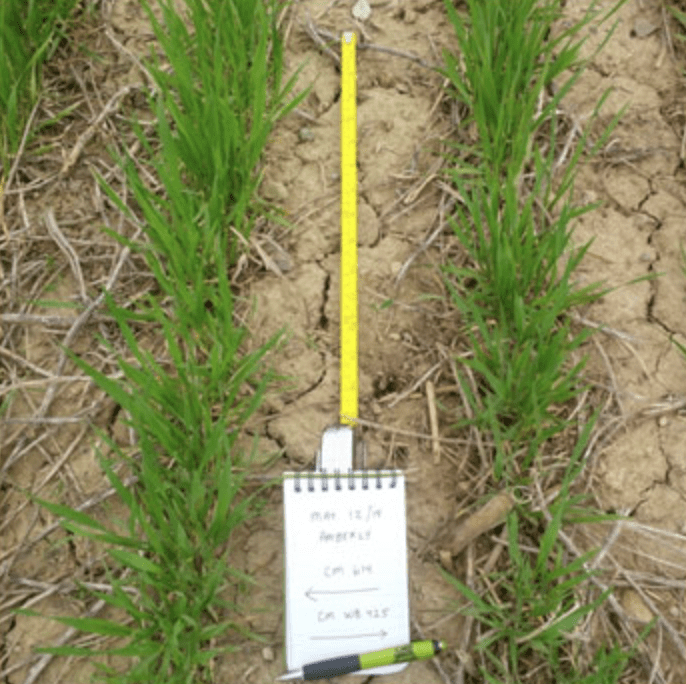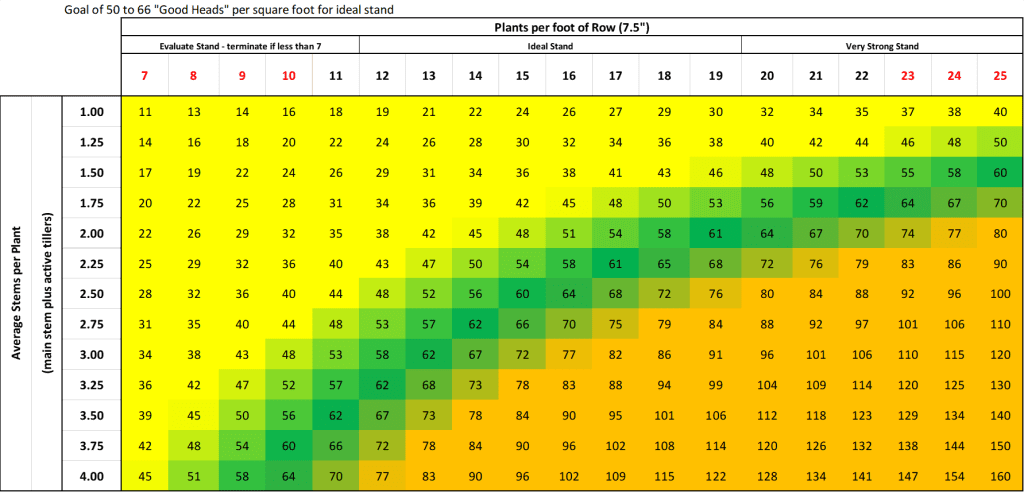Once the snow melts and the wheat breaks dormancy, every wheat producer should be in their fields conducting a spring stand assessment to ensure they have a viable crop. Assessing your wheat stand will allow you to make well informed management decisions such as nitrogen and sulphur programs, fungicide applications and plant growth regulator requirements.
NOT ALL WHEAT FIELDS ARE THE SAME
Some fields will be “greener” than others, making people wonder if their field is alive and well. This is due to warmer temperatures triggering plants to start growing faster than others but in most cases the wheat will be fine. If you are worried, take a shovel out and dig up a few plants, place them inside your home and place them in a pail with dirt. After 3 days, you should see new, white roots starting to form. This will indicate if your wheat is alive.
SCOUT YOUR FIELDS TO DETERMINE THE BEST WAY TO MANAGE
It is always best to view the crop from a mathematical standpoint to determine what kind of yield potential and lodging risk you have. A strong stand of wheat will have between 50 and 66 good heads per square foot. Having a stand that is over that number quite often leads to a lodged crop of wheat – and under, we need to encourage tillering to reach maximum yield potential. Most often wheat lodges because stand is too thick, and stems are too thin – not too tall.
The Wheat Team has created a simple stand count chart that could assist in determining how many heads per square foot your field has. The chart relates emerged plant population that exists against stems and potential for heads on each plant. Do a plant count in the spring to determine average plants per foot of row – and examine the plants you are counting to identify the number of tillers that may develop a head. Compare that number to the chart and if the number falls between 50 and 66 good heads per square foot, the crop can be maximized and lodging risk will be lowered.
To conduct a stand count, determine the length of one foot of row and count the number of plants on either side. Do this for ten spots in a field. Make it random, but also make it representative. Try to avoid old wheel tracks, guess rows, knolls, or valleys. Once you have 20 counts (two counts at each of 10 spots), take the average. Pub 811 shows research that 7 plants per foot of row will still produce a 90% of the yield of a full stand. The Wheat Team’s cut off point is 10.
• 7 plants/ft or less – terminate it
• 8 to 10 plants/ft – carefully weigh alternatives
• 11 plants/ft or more is worth keeping
Pay attention to the uniformity, too many large gaps or bunches are not good. An Ideal count would be 16 uniform plants with one tiller per foot of row. A strong stand with full potential would have 50-66 good heads per square foot. We typically plant around 23 seeds/ft of row in the fall. In the spring, we can make successful wheat crops with as few plants as 8 plants per ft/row. But, success depends on what you do with those 8.
Stand Count Evaluation Chart
Use your tiller or stem count and plants per foot of row to identify if you are at risk of lodging. Above the green needs tiller encouragement, below the green is at lodging risk.
SPLIT APPLICATIONS OF FERTILIZER LOWER LODGING RISK
Knowing the number of good heads expected in your crop will also assist in making wise fertility decisions. Split applications of fertilizer are always preferable to a single application because there is less environmental risk and an anticipated economic boost. The goal of a split application of fertilizer is efficient use of the product – the wheat plant only uses around 40% of its total nitrogen requirements previous to zadok’s growth stage 31 (stem elongation). We should all be reminded of the 4R’s – Right Source, Right Rate, Right Time, Right Place.
If you have a number just under 50 heads/sq ft in the spring, you could add more fertilizer in your first application to encourage and maximize tillers .
Apply early nitrogen and sulphur at first opportunity will help create tillers. Nitrogen in ammonium form is preferred for quick release and uptake. If managed properly, can provide the opportunity for strong yield potential.
If the number is greater than 66 heads/sq ft, you want to maintain nutrition but do not over-stimulate.
A seriously thick stand. Consider a PGR. (Check lodging score for varieties) Strongly consider split applications of nitrogen, or delayed first application on first N pass to discourage further tillering.
Lodging can be avoided now, do yourself a favour and check your wheat to lower stress in the harvest period.




